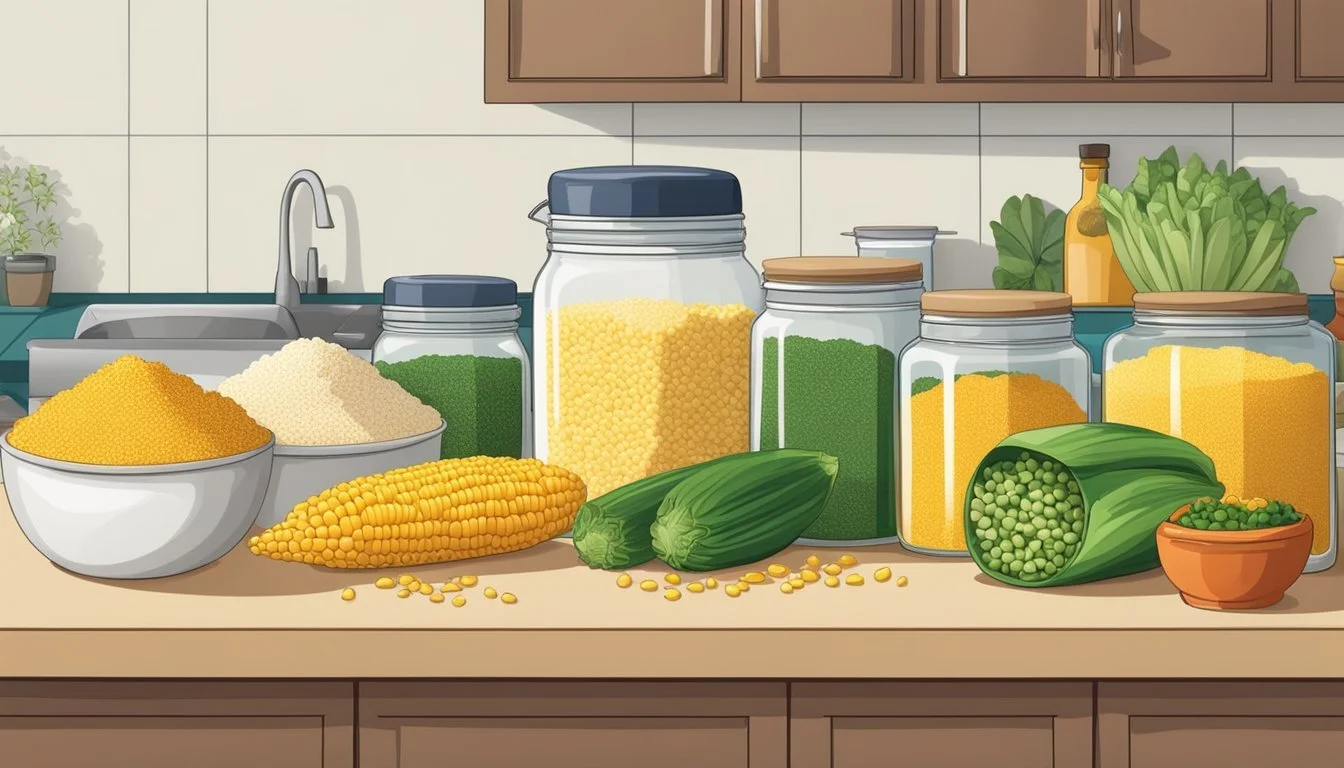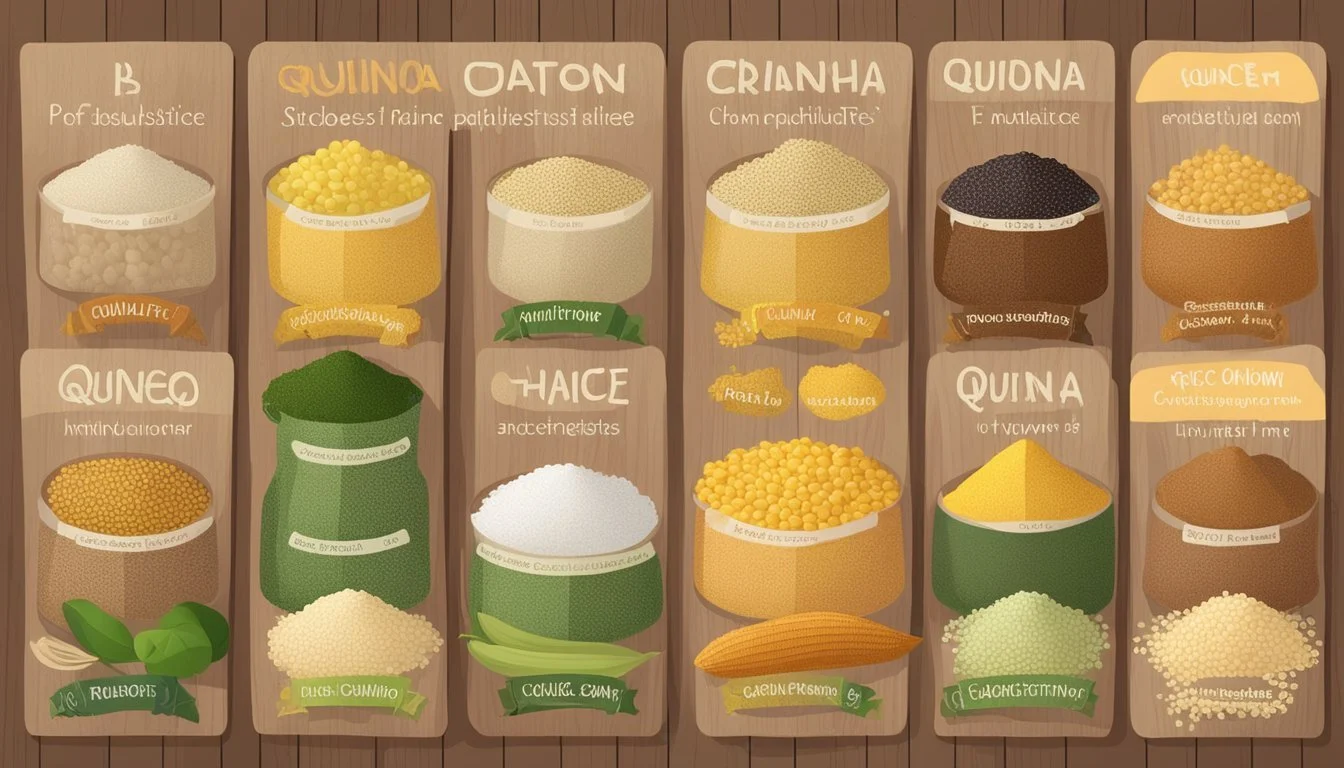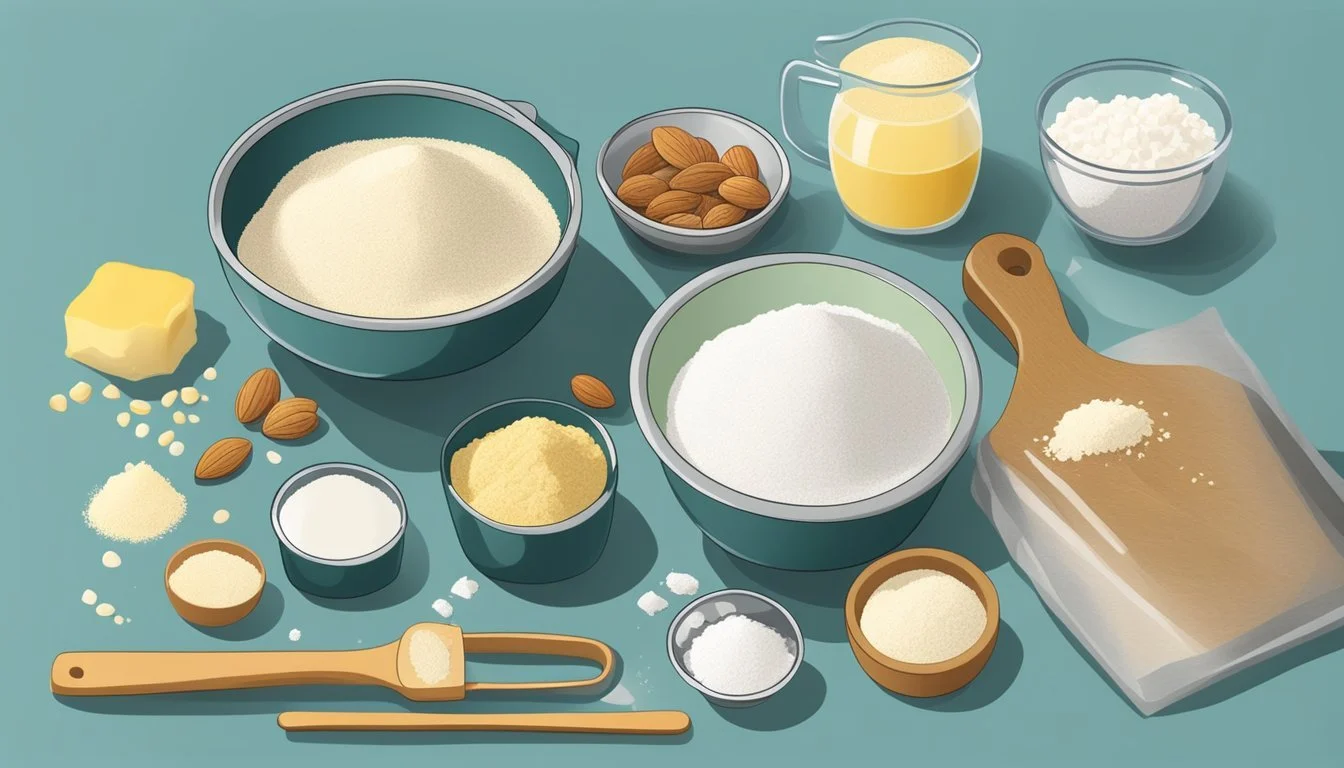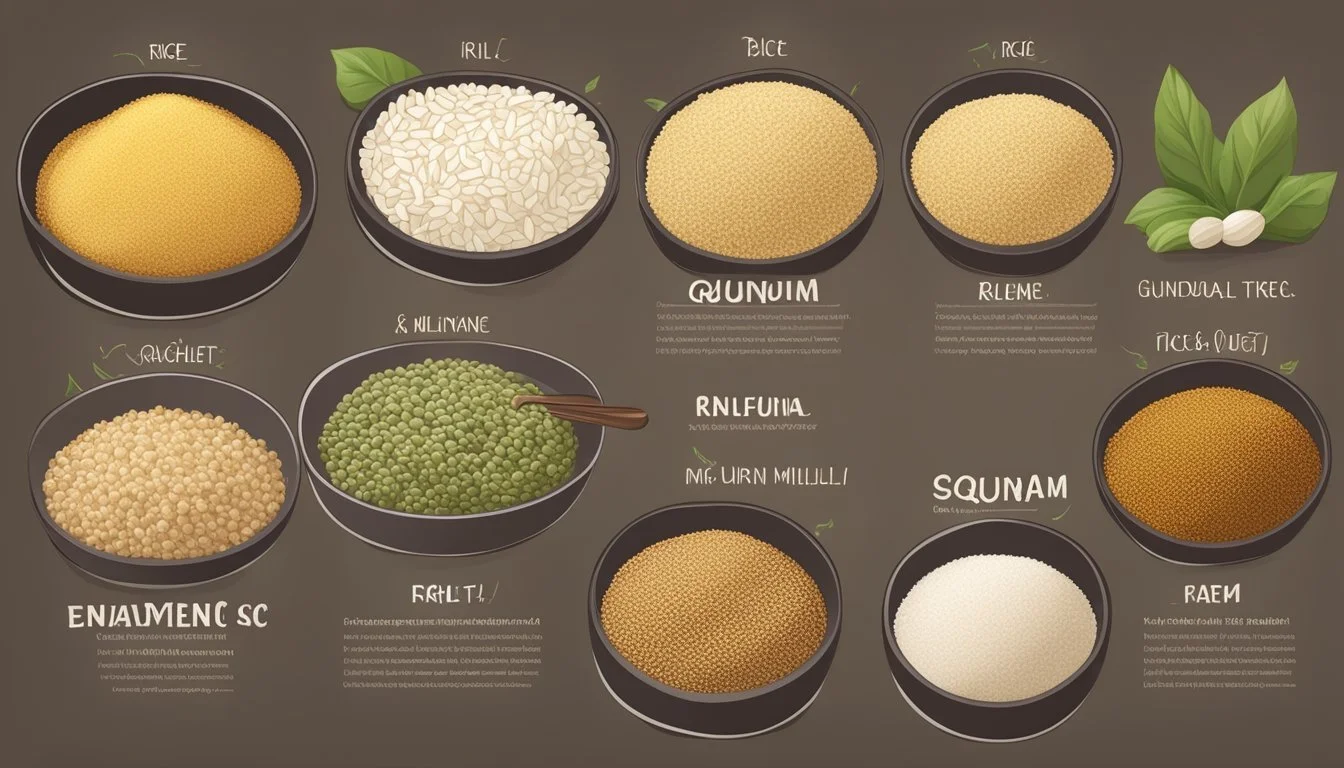Corn Substitutes
Top Alternatives for Allergy Sufferers and Cooks
Corn is a staple ingredient in many cuisines around the world, prized for its sweet flavor and versatility. It can be found in an array of dishes, from soups and salads to main courses and desserts. However, for individuals with dietary restrictions, whether due to allergies, health concerns such as diabetes, or lifestyle choices like a low-carb or ketogenic diet, finding suitable corn substitutes is essential. These substitutes not only need to mimic the texture and flavor of corn but also align with nutritional guidelines and personal health goals.
The search for viable alternatives to corn has led to a variety of options. Ingredients such as quinoa, rice, sweet potatoes, cauliflower, zucchini, broccoli, and legumes emerge as popular replacements. Each of these offers a unique set of benefits, including lower carbohydrate content for those on keto diets and an absence of allergens for those with sensitivities. Substituting sweeteners like maple syrup or agave nectar for corn syrup provides natural sweetness and a reduction in processed sugars.
Selecting a corn substitute depends largely on the intended use within a recipe. The desired taste, texture, and nutritional content will guide the choice of alternative. For instance, pureed cauliflower or mashed sweet potatoes can offer a similar consistency to creamed corn, while rice or quinoa might better suit a dish that typically incorporates whole corn kernels. These alternatives provide cooks and diners with ample opportunities to enjoy their favorite meals without corn while adhering to their dietary restrictions.
Understanding Corn and Its Characteristics
Corn, also known as maize, is a staple crop that serves as a fundamental ingredient across a variety of culinary traditions. It is renowned for its versatility and nutritional contributions to the human diet.
Role in Cuisine
In culinary contexts, corn is celebrated for its sweet and earthy flavor. As a key ingredient, it is found in an array of dishes ranging from savory foods like tortillas and polenta to sweetened desserts and cereals. Its presence is crucial in many cultural cuisines, acting as a staple food that is both a primary source of energy and a vehicle for various flavor profiles within recipes.
Nutritional Values
Nutritionally, corn is a source of energy, deriving from its carbohydrate content. It also provides dietary fiber, protein, and essential minerals including iron and potassium. Corn is rich in vitamin C, which supports a healthy immune system and acts as an antioxidant. Here are key nutritional qualities of corn, per 100 grams:
Nutrient Amount Energy 86 kcal Protein 3.2g Fiber 2.7g Vitamin C 6.8mg Iron 0.52mg Potassium 270mg
Corn Varieties
There are numerous varieties of corn available, with the main types being sweet corn, field corn, popcorn, and flint corn. Each type is distinct; sweet corn is primarily consumed as a vegetable, field corn is often used for livestock feed or manufactured into corn syrup and other products, popcorn is known for its ability to puff up when heated, and flint corn is characterized by a hard outer shell and is commonly ground into cornmeal. The diversity of corn extends to genetically modified (GM) varieties, which are engineered for traits such as increased yield, pest resistance, and herbicide tolerance.
Why Substitute Corn?
Corn is a staple in many diets, but various reasons necessitate looking for substitutes. These encompass health concerns like allergies, personal dietary choices, and even the simple fact of corn's unavailability at times.
Allergies and Sensitivities
Individuals may be allergic or sensitive to corn and its derivatives, exhibiting symptoms that necessitate avoidance. For people with celiac disease or gluten sensitivity, it's essential to find gluten-free alternatives due to cross-reactivity issues where corn gluten can trigger similar reactions to wheat gluten.
Dietary Preferences
Adhering to particular dietary preferences or needs often leads to seeking corn substitutes. Those following a low-carbohydrate diet may avoid corn due to its high carb content. Others might prefer ingredients lower in sugar or with a different nutritional profile that better suits their dietary goals.
Availability Issues
Availability can be a challenge, influencing the need for substitutes for corn. Whether it’s due to seasonal fluctuations, regional differences, or economic factors, alternative ingredients might be needed when corn is not an option.
Culinary Substitutes for Corn Kernels
When a recipe calls for corn kernels and they are unavailable, a variety of vegetables, legumes, and grains can serve as excellent substitutes, each offering its own unique taste and nutritional benefits.
Vegetable Alternatives
In salads, soups, and stews, corn kernels can be replaced with a variety of vegetables. Cauliflower is a versatile vegetable that offers a similar bite and color. It can be chopped into small pieces to mimic the size of corn kernels.
Green peas: Sweet and small, peas make for a perfect one-to-one substitute in terms of size and add a gentle sweetness comparable to corn.
Protein-Rich Replacements
Legumes such as lentils and black beans can be used as substitutes for corn to increase the protein content in dishes without sacrificing texture.
Lentils: They offer a meaty bite and can absorb surrounding flavors well.
Black beans: With a soft texture, black beans are a nutritious substitute that work well in salsas and salads.
Other Grain Options
Various grains provide texture and heartiness, making them ideal substitutes for corn kernels in many recipes.
Quinoa: A complete protein and gluten-free option, quinoa has a slight crunch and nuttiness, perfect for adding to bowls and salads.
Rice: Especially short-grain varieties, can resemble the soft bite of cooked corn and act as a filler in casseroles and salads.
Barley: Offers a chewy texture and can serve as an interesting replacement in soups and pilafs.
Alternatives to Corn-Based Products in Cooking and Baking
When cooking and baking, a variety of substitutes are available for corn-based products, ensuring those with allergies or preferences can still enjoy their favorite recipes.
Flour and Meal Substitutes
Wheat Flour: A common substitute for cornmeal, wheat flour is easily accessible and provides a similar texture, though the flavor differs. For a gluten-free option, one can utilize Rice Flour, which offers a fine texture often used to thicken soups, sauces, and stews.
Buckwheat and Oats: These can be ground into a meal as an alternative to cornmeal. They impart a distinct flavor that can complement various recipes.
All-Purpose Flour: Often used in baking, this can replace corn flour in many recipes on a 1:1 basis, but adjustments may be necessary for texture and density.
Cornstarch and Thickener Alternatives
Potato Starch: This is an excellent thickener and a viable substitute for cornstarch, particularly in soups and sauces.
Tapioca Starch: Derived from cassava root, this starch is ideal for thickening pie fillings and puddings without altering the flavor.
Arrowroot Powder: A neutral-tasting thickening agent, arrowroot powder works well in acidic dishes and freezes better than cornstarch-based sauces or fillings.
Unique Substitutes for Specific Corn Products
Homemade Cornmeal: If corn is not a dietary concern, one can make homemade cornmeal by dehydrating and grinding corn kernels to the desired coarseness.
Polenta: As polenta is made from coarse ground yellow corn, it serves as a direct substitute for coarse cornmeal, especially in Italian cooking.
Utilizing these alternatives, cooks and bakers can tailor their recipes to accommodate dietary restrictions or simply to experiment with different flavors and textures.
Corn in Textures and Flavors Across Recipes
In exploring alternatives to corn, one must consider how to replicate its unique texture and sweetness, as well as how to infuse the distinct flavor it imparts to various dishes.
Replicating Corn Texture
When substituting for corn, it's essential to match its distinct crunch and mouthfeel. For salads or dishes where corn provides a juicy and crunchy texture, broccoli can be an excellent replacement, providing a similar crunch. In soups, where corn often adds bulk, diced potatoes, carrots, or celery can provide comparable substance.
Mimicking the Sweetness of Corn
Corn's sweetness can be essential in balancing flavors in sauces and custards. To achieve a similar sweetness in recipes, natural sweeteners like honey and maple syrup can be used. They offer a 1:1 substitution ratio for corn syrup and bring their own subtle flavor profiles that can complement other ingredients.
Infusing Corn-Like Flavor
The sweetness and flavor of corn are unique, but certain ingredients can emulate the taste profile sufficiently. In chilis and savory dishes, sweet potatoes and black beans are favorable for their natural sweetness and satisfying texture. For a more delicate flavor suitable for salads and lighter fare, diced red bell peppers or avocado are preferred for their freshness and ability to absorb surrounding flavors.
By selecting the appropriate substitutes, one can maintain the integrity of the original dish while offering a new twist on classic recipes.
Corn Substitutes in Global Culinary Traditions
In global cuisine, corn plays a multidimensional role, from a basic staple to a cultural symbol. However, dietary restrictions, allergies, and preferences necessitate substitutes that maintain the integrity of traditional dishes while offering similar taste and texture profiles.
Corn Substitutes in Mexican Cuisine
Mexican cuisine is deeply entwined with corn, particularly in tortillas and tacos. Chefs may substitute corn tortillas with flour tortillas made from wheat, although this changes the flavor and texture. Similarly, in dishes that traditionally use masa harina, like tamales, cooked and ground cassava or rice flour can be a suitable replacement, offering a different but pleasant taste and texture.
Adapting Substitutes in American Dishes
In American cooking, particularly for cornbread and chili, substitutes must retain the dish’s heartiness. Wheat flour can replace cornmeal to create a different version of cornbread, while bulgur wheat can offer a similar bulk in chili without the use of corn kernels. Ears of corn in salads and sides can be substituted with chopped bell peppers for a different crunch and sweetness.
Alternatives in Asian Cooking
While corn is not always the centerpiece in Asian cooking, it is used in soups, stews, and stir-fries. Cooks may replace corn with diced potatoes, carrots, or peas to mimic the color variation and starchy composition. Ingredients like polenta may take the place of corn-based components, delivering a consistency preferable in some Asian dishes while respecting the culinary tradition's simplicity and flavor.
Incorporating Corn Substitutes into Diets and Lifestyle
When adapting one's diet, either due to personal choices or dietary restrictions, finding suitable corn substitutes can ensure meals remain wholesome and enjoyable. This section discusses how to incorporate corn substitutes into various diets and lifestyles, offering alternatives that align with vegetarian and vegan diets, low-carb and keto options, and health-conscious choices rich in nutrients such as antioxidants and beneficial for those requiring gluten-free solutions.
Vegetarian and Vegan Considerations
In vegetarian and vegan cooking, corn serves as a versatile ingredient that can be replaced to maintain a balance of flavor and texture. Wholesome alternative grains, such as oats or quinoa, offer similar satiety, and for baking, a combination of all-purpose flour and cornmeal can be substituted with gluten-free flour blends. For a rich, creamy texture, non-dairy milk and vegan butter serve as perfect counterparts in recipes that typically call for their corn-derived variants.
Example Vegan Recipe Base:
Dry Ingredients: 1 cup gluten-free flour blend, 1 cup oat bran.
Wet Ingredients: 1/3 cup melted coconut oil, 1 cup almond milk.
Low-Carb and Keto Diet Options
Individuals following a low-carb or keto diet often need to find substitutes for corn that align with their macronutrient goals. Vegetables such as riced broccoli and cauliflower rice are excellent alternatives that can mimic the texture of corn while keeping carb counts low. For a crunchy element, pork rinds may replace corn chips or croutons, offering both flavor and a keto-friendly crunch.
Keto-Friendly Substitutes:
Using Vegetables: Swap corn with riced broccoli for a nutrient-dense, low-carb side.
For Crunch: Use crushed pork rinds in place of croutons or chips.
Health-Conscious Choices
For the health-conscious, corn substitutes should enhance the nutritional profile of meals. Antioxidants found in fruits and vegetables are necessary for a balanced diet and can be incorporated through alternatives like bell peppers or squash. A gluten-free diet benefits from corn substitutions that are equally rich in fiber, vitamins, such as C and B vitamins, and minerals like potassium.
Healthy Swaps:
Vegetables: Substitute corn with chopped bell peppers for a dose of antioxidants.
Fruits: Use puréed fruits like applesauce to add sweetness and moisture to recipes.
Creative Corn Substitute Ideas in Everyday Meals
In seeking to diversify the palate and cater to dietary preferences or restrictions, the practicality of corn substitutes becomes evident—particularly in day-to-day meal planning. These alternatives maintain the essence of traditional dishes while offering a nutritional variety across breakfast, lunch, and dinner.
Breakfast Options
For a wholesome start to the day, one might replace corn in breakfast foods with ingredients like oats. An oat-based porridge can be bolstered with fruits and nuts for added texture and flavor. In savory breakfast bowls, quinoa, a protein-packed seed, serves as an excellent stand-in for corn, offering a similar bite and versatility.
Oatmeal Breakfast Bowl
Cooked oats topped with cinnamon, honey, and sliced almonds.
Quinoa mixed with scrambled eggs, spinach, and tomatoes.
Hearty Lunch Selections
Lunchtime salads and stews are elevated through the incorporation of legumes like chickpeas, which lend a satisfying crunch and protein boost. They are particularly effective in salads, adding both substance and a nutty flavor. Quinoa once again proves its worth as a corn alternative in salads, matching the texture and ability to absorb flavors, while also topping the nutritional chart.
Chickpea Caesar Salad
Romaine lettuce, parmesan, chickpeas, and Caesar dressing.
Quinoa Veggie Salad
Mixed greens, quinoa, cherry tomatoes, avocado, with a lemon vinaigrette.
Dinner and Main Course Innovations
When it comes to dinner, stews and casseroles often call for corn for its sweetness and texture. Here, substitutes such as cubed sweet potatoes or carrots offer similar heartiness and a mild sweetness. In the realm of casseroles, lentils can give the dish body and depth, and when cooked properly, adopt the consistency that one may miss from corn.
Sweet Potato Beef Stew
Beef chunks, sweet potatoes, onions, and beef broth, slow-cooked to perfection.
Lentil Shepherd's Pie
Layer of savory lentil stew topped with fluffy mashed potatoes and baked.
By considering these creative substitutions, one can effortlessly navigate a corn-free menu while ensuring that meals remain balanced and satisfying.
Conclusion
Finding the right corn substitute can depend on one's dietary restrictions and the specific culinary application. For baking, spelt has proven to be a valuable alternative, providing a slightly sweet and nutty flavor to bread, muffins, and pancakes. It can replace cornmeal in various recipes, offering a unique taste profile.
In terms of sweeteners, substituting corn syrup with maple syrup or agave nectar is straightforward; they can be used in equal quantities and possess similar consistencies. Maple syrup imparts a unique flavor, while agave nectar is praised for its all-natural sweetness.
When one's recipe needs a corn alternative for textural purposes, options such as broccoli, cauliflower, zucchini, and potatoes can fill the void—especially in dishes like salads, chili, soup, and chowder. Each brings their own flavor and nutrients to the table, making them not just substitutes but enhancements in some cases.
For those requiring gluten-free options, rice flour can seamlessly thicken soups, stews, and sauces much like corn would. Its fine texture is particularly beneficial for individuals with gluten sensitivities or celiac disease.
In summary, the choice of a corn substitute should be guided by the requirements of the dish and personal dietary needs. Regardless of the reason for avoiding corn, there is a multitude of substitutes that ensure cooking and baking needs are met without compromising on taste or texture.






